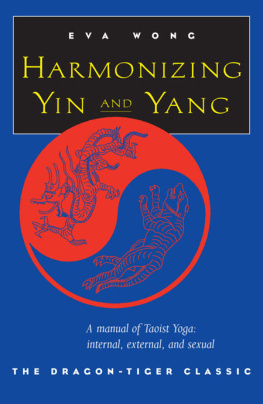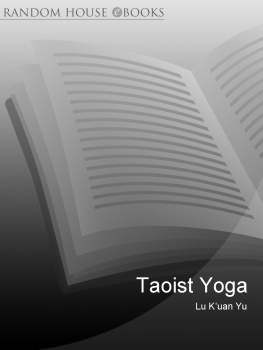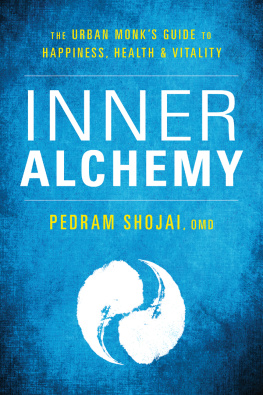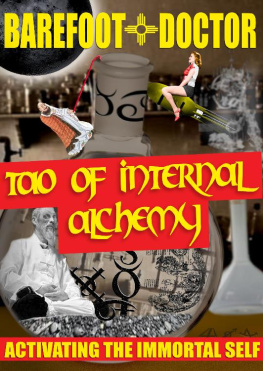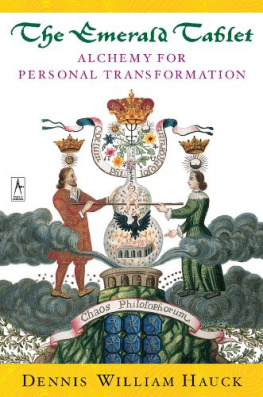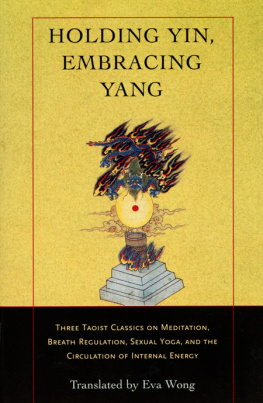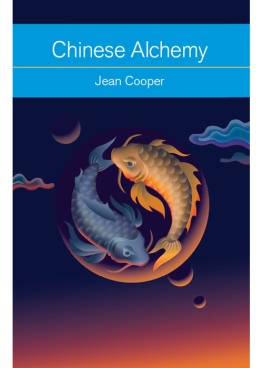Contents
Wang Mu
FOUNDATIONS
OF INTERNAL ALCHEMY
The Taoist Practice of Neidan
Translated and edited
by Fabrizio Pregadio
Golden Elixir Press
Originally published as Wuzhen pian danfa yaozhi
Note : If you do not see the Chinese characters above, your device may not support them. Chinese characters will be invisible or will be replaced by question marks or other symbols.
Golden Elixir Press, Mountain View, CA
www.goldenelixir.com
Paperback Edition Copyright 2011 Golden Elixir Press
ISBN: 978-0984308255 (pbk)
Kindle Edition Copyright 2012 Golden Elixir Press
2nd Revised Kindle Edition Copyright 2014 Golden Elixir Press
All rights reserved.
The present revised Kindle edition contains updated bibliographic references, and changes in formatting to adapt the text to the newer e-readers.
Foreword
This book was originally published in 1982 as a two-part essay in Zhongguo daojiao (Chinese Taoism), the official journal of the China Taoist Association . In slightly revised forms, it was republished in 1990 as a lengthy appendix to an annotated edition of the Wuzhen pian (Awakening to Reality), entitled Wuzhen pian qianjie (A simple explanation of the Wuzhen pian ); and again in 1990 in the authors collected writings, entitled Neidan yangsheng gongfa zhiyao (Foundations of the practices of Internal Alchemy and Nourishing Life), with several later reprints.
The author, Wang Mu (190892), received the Longmen ordination in his youth. He taught Internal Alchemy (Neidan) and was held in high regard by both practitioners and Taoist scholars. He served as a board member of the China Taoist Association and was for some time in charge of its research activities. He is known outside China mainly for the above-mentioned edition of the Wuzhen pian , the text at the basis of the outline of Internal Alchemy that he provides in the present book.
As all readers will notice, Wang Mu writes from the viewpoint of his tradition. He accepts virtually all traditional details concerning such issues as doctrine, lineage, and textual authorship or date. In many cases, he essentially rephrases statements found in the original texts into present-day language. His procedure is also analogous to the one seen in the textual sources of Neidan, which repeatedly quote passages of earlier writings taking them as positive and definitive evidence of the validity of their own assertions. The recurrent articulation of certain basic concepts is another feature shared with the original Neidan texts.
Except for the introduction and the short conclusion, Wang Mus work is arranged according to the stages of the alchemical practice: a preliminary phase followed by three main stages. For each stage, the focus of Wang Mus discourse, which makes his work extremely valuable, is the discussion of the main relevant terms and concepts, including such essential notions as Essence, Breath, and Spirit; the fire times (huohou ); and the Embryo. With regard to this point, an additional trait that his discussion shares with the alchemical texts is the progressively shorter space devoted to each stage. As Li Daochun (ca. 1290) wrote in one of his works, when the alchemical practice comes to the third and last stage, no words apply.
As a writer, Wang Mu makes very few concessions to his reader, and none specifically to his Western reader: his work is written for, and addressed to, a Chinese audience. Although he provides an accessible overview of Internal Alchemy, mainly focused on its practices, he does not intend in the first place to popularize, but to transmit. This feature has been preserved in the present English translation: with the exception of a few footnotes that attempt to clarify certain points probably taken for granted by a Chinese reader, but possibly equivocal for a Western reader, the translation attempts to reproduce as closely as possible the authors own writing style and way of reasoning. References to sources, which Wang Mu as a rule does not provide, have been supplied for all quotations that have been identified.
One final point that requires consideration in reading Wang Mus work is directly related to its date of publication. In the Peoples Republic of China, during the 1980s, Taoism had just begun to recover from the trials endured in the previous decades, making good use of a limited easing of controls by the central government. Several works published in those years present Neidan as a form of Qigong, in an effort to circumvent restraints on what was still official labeled as a feudal superstition. This may explain Wang Mus frequent stress on the merits of Neidan in relation to medicine and healing, his repeated references to the scientific evidence of its benefits, and the value he accords to the practitioners active attitude, suggesting that the Neidan practice does not necessarily imply a lack of involvement in society. Certain terms and notions occasionally used in the booke.g., materialism and subjective idealismare best seen as the price to pay in order to be entitled to write on more significant subjects.
Fabrizio Pregadio
February 2011
Part 1
INTRODUCTION
The Basis: Essence and Spirit
The work entitled Awakening to Reality (Wuzhen pian ), written by Zhang Boduan around 1075, has been included in the Taoist Canon, in the Buddhist Canon, and in several collections compiled by Confucian scholars under imperial decree. The Siku tiyao (Descriptive Notes on the Books of the Four Repositories ) states that, with Wei Boyangs Cantong qi (Token for the Joining of the Three), Awakening to Reality contains the orthodox transmission of the Taoist alchemical methods. In the table of contents of his Daozang jinghua lu (Record of the Essential Splendors of the Taoist Canon), Ding Fubao (18741952) praises Awakening to Reality saying: Its words are smooth and fluent, and its meaning is deep and profound. This work contains the golden rule to cultivate the Elixir, the jade principle to give nourishment to life.
This shows that Awakening to Reality has been held in high esteem within all the Three Teachings: Taoism, Confucianism, and Buddhism. With regard to Neidan (Internal Alchemy), Zhang Boduans work inherits and transmits the principles of self-cultivation of the Cantong qi , and provides a synopsis of the doctrines of the period prior to the Song dynasty (9601279). However, Awakening to Reality is addressed to those who have already attained a rather deep level of attainment in the practices of Neidan (Internal Alchemy). Therefore Zhang Boduans work does not begin from the basic methods, and does not provide a systematic arrangement of the stages of the alchemical practice. In addition, its poems are obscure and do not follow a precise sequence. This is done intentionally, so that those who read the text for the first time may perceive its profundity.
While Awakening to Reality does not deal with the initial stage of the practice, details on this subject are found in three other works by Zhang Boduan. One of them, the Secret Text of Green Florescence (Qinghua biwen ), contains a systematic exposition of oral instructions on the foundations of the practice. The other two, namely the Four Hundred Words on the Golden Elixir (Jindan sibai zi ) and the Book of the Eight Vessels (Bamai jing ), give concrete details on the initial stage.
These works supply what is missing in Awakening to Reality . The present book will look at the four texts together and present their content in a systematic way. This will make it possible to proceed without ambiguities from the surface to the core, and present an outline of Zhang Boduans alchemical practice. The broader integration of these notions lies in the hands of the reader: the present book can do no more than providing some clues, and should be used only as a source of information.


